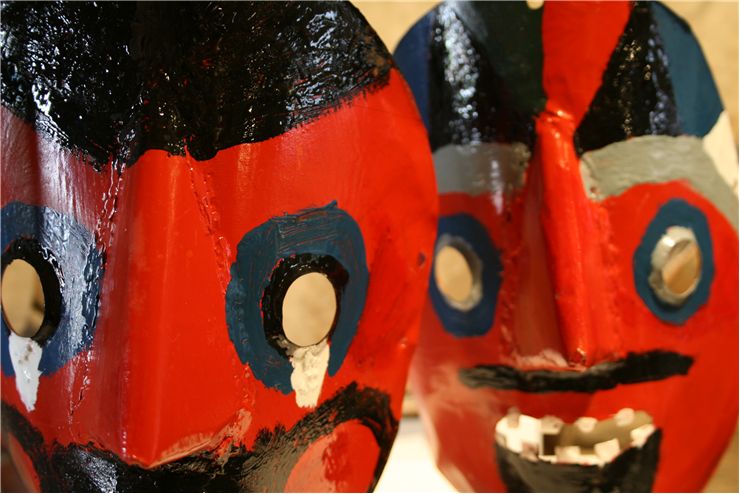History of Korean Masks
Korean masks have a long history of various uses. Soldiers wore masks in battles but there were also special masks for horses. Jade and bronze masks were used as funerary masks. Shamans used masks in cleansing rituals to drive away evils spirits from the ill. Masks in the likeness of historical persons were used as a way of honoring them. Koreans also used masks (“tal” in Korean) in ritual dances (talnori) and in theatrical plays (talchum).
There is a theory that says that name “tal” for “mask” comes from Chinese language where it meant “to be free”. Mask were used in theatrical plays that were means of expressing criticism against everything that was considered wrong, like powerful aristocracy, Buddhist hierarchy, corruption, drunkards, gossips and flirts. In a way, they freed people to talk about the things that were by law or socially unacceptable.

Legend says that the craftsman Huh Chongkak has been ordered by twelve gods to build twelve masks and not to have human contact until he finishes them. While he was finishing the last one, a girl that was in love with him peeked through the window to see why he wasn’t going out for so long. At that moment, he fell dead and left the last mask unfinished. That’s why one of the masks has no lower jaw. Of the twelve masks that story mentions, nine styles are known. The other three are lost for the history. They are traditionally made from alder wood, gourds, papier-mâché and have black hood on the back. Hood keeps mask on the head and looks like black hair at the same time.
Traditional Korean masks have their names and characters in the masked theatre. “Choegwari” is an old Buddhist monk with a full chin that tells that he enjoys food. He is corrupted and immoral, everything a monk should not be. His face is red but not to make him demonic (like it would look to a western audience) but to show his age. In Korean color symbolic, white is for young characters, red for middle-aged and black for masks that represent characters of old age.
“Nojang” is also a fallen monk but an older one. He is a drunkard, which can be seen by his yellow eyes, and a womanizer. White spots on his face represent flyspecks. It is said that he studied scriptures so hard that he did not notice what flies did to him. Idea was to show that even very devout monks can fall and succumb to corruption.
“Bune” is a young woman, often a concubine of some of the other character. She represents beauty and is decorated with small mouth, rosy cheeks and arch-shaped eyes that smile. “Yangban” is the aristocrat. He is cheerful but could have you flogged to death if you insult him. Mask was made so it had two expressions, depending of the angle in which head was held which skilled actors could use to express change in the character. Some variants of this mask were painted half white and half red to show that Yangban’s father was not his biological father. Other Yangbands were made as deformed by smallpox or leprosy. That was a way a theatre was used as a sort of revenge against those who oppressed the people.
